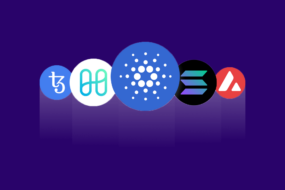
Could Ordinals and Runes unlock new use cases and financial instruments on Bitcoin?
Two terms have been making waves in the Crypto world recently – Ordinals and Runes. These concepts, developed by Casey Rodarmor, a prominent figure in the Bitcoin community, have sparked significant interest and discussions within the crypto sphere. Let’s delve into what Ordinals and Runes are, compare them, explore their current trend, impact, advantages, and shortcomings
Ordinals: Etching Data onto Bitcoin
Imagine carving your initials onto a historical monument. Ordinals do something similar on the Bitcoin blockchain. They allow users to permanently inscribe data directly onto individual Satoshis (the smallest unit of Bitcoin). This data can be anything from images and text to even video games! Ordinals essentially turn Satoshis into unique digital artifacts, similar to NFTs on other blockchains.
Runes: Fungible Tokens for Bitcoin
Think of Runes as a new type of digital asset built on top of Ordinals. Unlike Ordinals, which are unique, Runes are fungible. This means individual Runes are interchangeable, just like Bitcoin itself. This opens the door for creating things like loyalty points, stablecoins (crypto pegged to a stable asset), or even new cryptocurrencies on the Bitcoin network.Runes build upon the concept of Ordinals by using UTXOs (unspent transaction outputs) to generate transactions, offering a more efficient way to create fungible tokens on the Bitcoin network.
Runes vs. Ordinals: A Tale of Two Approaches
Understanding ordinals and runes is crucial for several reasons. They demonstrate Bitcoin’s versatility, moving beyond its traditional role as a store of value.
Ordinals introduce scarcity to digital items, appealing to collectors. Meanwhile, Runes present an innovative method for creating fungible tokens on the Bitcoin network, potentially improving efficiency and security.
- Functionality: Ordinals focus on attaching data to satoshis, while Runes extend this concept by allowing the creation of fungible tokens using UTXOs.
- Efficiency: Runes aim to streamline the process of creating tokens on Bitcoin, offering greater simplicity and security compared to the current BRC-20 standard.
- Independence: While BRC-20 tokens are dependent on Ordinals, Runes stand as a standalone protocol with no dependencies, designed to be more efficient and user-friendly.
Trend and Impact
The recent buzz surrounding Ordinals and Runes indicates a growing interest in these protocols within the crypto community. With the launch of Runes coinciding with the Bitcoin halving, these innovations are poised to bring significant changes to the crypto landscape. Projects like RSIC, Runestone, Node Apes, and others are already aligning with Runes, anticipating its potential success.
Advantages
- Efficiency: Runes offer a more efficient way to create and transfer tokens on the Bitcoin network.
- Security: The protocol aims to enhance security and simplicity for users compared to existing standards.
- Innovation: Both Ordinals and Runes represent innovative approaches to token creation and management on the blockchain.
- New Use Cases: These technologies could pave the way for innovative financial applications on Bitcoin.
Shortcomings
- Complexity: While Runes aim to simplify the token creation process, there may be a learning curve for users transitioning from existing standards.
- Adoption: The success of Runes will depend on widespread adoption and acceptance within the crypto community.
- Regulation: Unclear regulations could hinder adoption.
- Scalability: The Bitcoin network might struggle with the increased data load.
- Security: New vulnerabilities could emerge as these technologies evolve.
The Future Unfolds
Ordinals and Runes represent a bold step for Bitcoin. While challenges remain, their potential to expand Bitcoin’s functionality and create new applications is undeniable. As these technologies mature, we’ll see how they shape the future of the world’s first cryptocurrency.
In conclusion, Ordinals and Runes stand as pioneering developments in the crypto space, offering new possibilities for token creation and management on the Bitcoin network. As these protocols continue to evolve and gain traction, their impact on the crypto ecosystem is expected to be profound, ushering in a new era of efficiency and innovation in tokenization.




